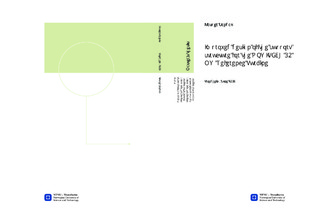Improved design of the support structure for the NOWITECH 10 MW Reference Turbine
Master thesis
Permanent lenke
http://hdl.handle.net/11250/237456Utgivelsesdato
2014Metadata
Vis full innførselSamlinger
Sammendrag
The aim of this thesis is to improve the support structure for the Nowitech 10 MW reference turbine (NRT) by optimizing the thickness and diameter of legs and braces section by section. This is a so called full-height lattice tower, and has been successfully optimized for a single load case in previous studies. However, these have only guaranteed local optima, as the problem formulations have been non-convex, and the algorithms gradient-based. This thesis first derives a convex problem formulation, also providing explicit expressions for step lengths. In the next stage a study investigates the ability of various fatigue load assessments to accurately represent a lifetime of loads. These findings are used to assemble a site-specific optimization approach which can be applied to any space frame structure. Using this approach, the support structure for the NRT was optimized for typical north sea conditions with 60 meter water depth. A jacket model was also designed for the NRT, and optimized using the same approach. Finally the lattice tower was benchmarked with the jacket support structure to assess the competitiveness of the concept.The explicit expressions for step lengths gave the optimization faster convergence, and the study of fatigue load assessments concluded that computation expenses can be reduced with at least an order magnitude while retaining good accuracy. A site-specific optimization of the NRT support structure led to a weight reduction of 40 percent compared to the previous design. Excluding the transition pieces, both the lattice tower and the jacket were optimized to approximately 700 tons. Consequently the lattice tower can be designed more than a hundred tons lighter, because the jacket TP is much heavier.
